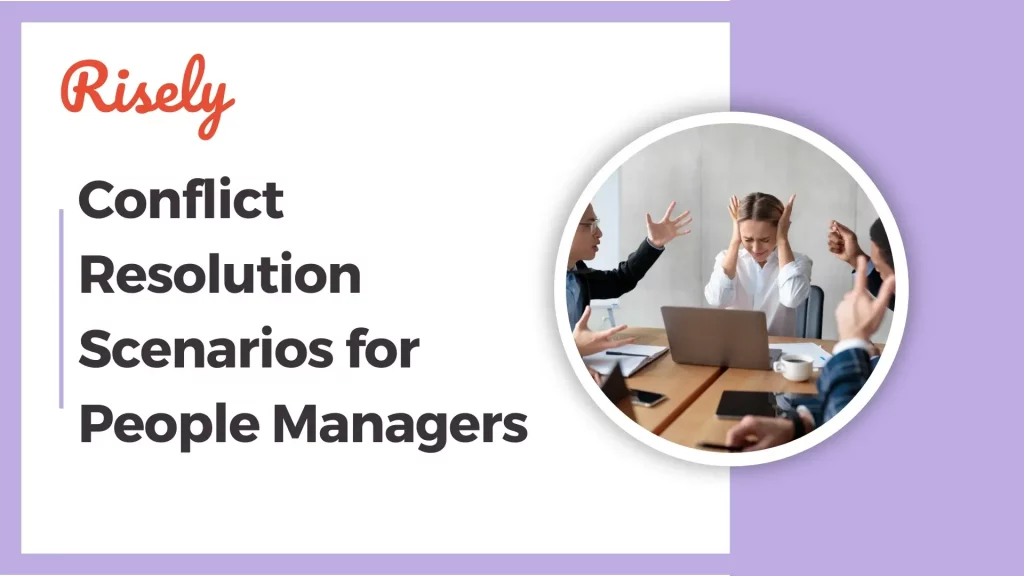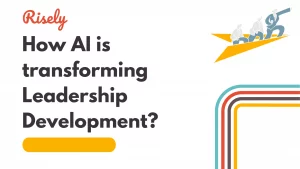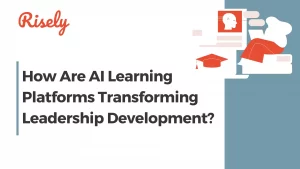Understanding Conflict in the Workplace
Conflict will happen whenever people interact, and this includes the workplace. It’s good to remember that conflict is not always bad. If we handle it in a positive way, it can help spark new ideas, make processes better, and build stronger relationships. However, if we ignore it, conflict lowers morale, reduces productivity, and damages the work environment. This is why it is important to spot early signs of conflict and know what may cause it. By dealing with conflict at work early, you make a better and more productive work environment for everyone. Conflicts can come from many sources, including poor communication, different personalities, varying work styles, and struggles for power. If these issues grow, they harm the work environment, causing less job satisfaction, more absences, and even higher employee turnover. However, when done right, conflict resolution can help the team. It promotes open conversations, understanding, and respect for different opinions. This way, you can turn conflict into a chance to grow and strengthen the team. Read more about conflict resolution: 5 Types of Conflict Resolution Styles: Which one is yours?7 Conflict Resolution Scenarios at Work for People Managers
Scenarios are useful for practicing conflict resolution skills as a manager. Here are a few that you should try:Conflict Scenario 1: Navigating Interdepartmental Conflicts
Sarah is a team leader in the Marketing Department, and James is a senior manager in the Product Development team at a mid-sized tech company. Both departments need to collaborate to create and launch a new product. However, over the past few months, tension has been growing between the two teams due to delays in deliverables, misunderstandings in communication, and differences in priorities.
Interdepartmental conflicts happen when departments compete for resources, have different priorities, or don’t clearly understand their roles. These conflicts cause frustration, slow down projects, and damage department relationships as we are seeing in the example shared above.How should you handle interdepartmental conflicts effectively?
- Start from the root cause: Before finding solutions, it’s important to figure out why departments have conflict. A team meeting with people from each department will provide you useful information. These people should be chosen not only for their job title but also for their skills in sharing their department’s view and being ready to listen to others.
- Hear out all the sides: The conflict mediator is important for guiding the talk. They make sure the discussion stays respectful and productive. Their neutral stance helps reduce tension. This allows departments to work together toward a solution that everyone agrees on. The aim is not to force a solution but to help departments feel heard and empowered to find a resolution that works for everyone.
Conflict Scenario 2: Resolving Conflicts Arising from Miscommunication
Anna is a senior project manager at an architectural firm, overseeing a high-profile commercial building design project. She works closely with Tom, the lead architect responsible for the design execution. Recently, Anna’s project management team feels that Tom’s design team is frequently deviating from the original project scope without informing them, leading to unexpected changes in timelines and costs. Tom’s design team, on the other hand, believes that the project management team is not providing clear enough instructions on client feedback and updates, causing unnecessary rework and confusion.
Miscommunication often leads to conflict at work. Whether it’s due to unclear instructions, lost emails, or misunderstood messages, the result is often the same: misunderstandings, frustration, and resentment among coworkers. Clear communication, on the other hand, sets clear expectations and reduces the potential for conflict.How can you handle conflicts arising due to miscommunication?
- Build a culture that communicates: Preventing future conflicts from miscommunication needs a proactive plan. Creating a workplace culture that values open communication and clarity is important. Regularly getting formal and informal feedback can help find and fix communication issues before they become conflicts.
- Aid skill enhancement wherever needed: Organizations can also gain from providing communication skills training for their employees. Training in active listening, giving effective feedback, and using conflict resolution strategies can help workers communicate better. It gives them the tools to handle disagreements in a constructive way.
Conflict Scenario 3: Handling Conflicts with Remote Workers
David is a software development manager at a multinational company, leading a hybrid team of both on-site and remote developers across multiple time zones. Maria is a senior developer based remotely in another country. Over the past few months, tension has grown between Maria and the on-site team. The remote workers, especially Maria, feel left out of key decisions, while the on-site team believes the remote workers are not as responsive or collaborative.
The rise of remote work has brought special challenges for resolving conflicts. Being far apart makes communication harder, leading to misunderstandings and problems understanding body language along with the proximity bias wreaking havoc. Good communication is important in handling conflicts with remote workers. Technology helps close the distance, but some conflicts still creep in.How to handle conflicts in remote works?
- Build strong communication skills: To manage remote teams well, you need to improve communication skills and create an online setting that encourages inclusivity and open talks. Good communication, regular catch-ups, and ways to build team spirit online can help close the gap of distance and reduce conflicts.
- Understand the contextual demands: Not having a physical workplace can make remote workers feel isolated or disconnected. This leads one to feeling less part of the team, causing communication issues and turning small disagreements into bigger ones. As the manager, you can mitigate isolation by focusing on pro-actively engaging remote workers.
Conflict Scenario 4: Addressing Leadership Style Conflicts
Emily is a results-oriented, hands-on department head at a fast-paced retail company, leading the Operations team. On the other hand, Daniel, a senior manager in her team, prefers a more thoughtful, process-driven approach. Emily, driven by her urgency to meet aggressive deadlines, often overrides Daniel’s suggestions to take a slower, more methodical approach to problem-solving. She feels that Daniel is too slow in decision-making and doesn’t push his team hard enough. Daniel, in turn, feels that Emily’s constant push for speed sacrifices quality and exhausts the team, leading to burnout. His team has also expressed that they feel micromanaged by Emily and are demotivated by the pressure to deliver quickly.
Conflict scenarios happen when leaders have different styles. This causes confusion and frustration, which leads to lower team morale. For example, a leader who gives clear orders may have problems with a team that prefers to work together. Likewise, a hands-off leader may seem to be not guiding the team enough.How to handle leadership style conflicts?
- Understand different leadership styles: Recognizing that different ways of leading work better for different people is important for solving problems. Each style of leadership, like being strict, working together, or letting others lead, has its own good and bad points. It’s important to understand how these styles affect how a team works together.
- Focus on strategic goals: When dealing with leadership conflict, the goal should be to find common ground and shared goals. It helps to highlight the need for teamwork, respect for different ideas, and a commitment to the organization’s goals. This shifts the focus from individual leadership styles to shared values and goals of your team.
Conflict Scenario 5: Dealing with Personality Clashes
Karen and Mike are both mid-level managers in the Finance Department of a large manufacturing company. They’ve been assigned to collaborate on a budget restructuring project. Karen is highly detail-oriented and meticulous and prefers a structured, methodical approach to her work. On the other hand, Mike is more spontaneous, prefers brainstorming and big-picture thinking, and doesn’t focus as much on smaller details. Their personalities clash, making collaboration difficult and causing friction within their team.
Personality clashes often cause problems at work and lead to conflict scenarios often. Different ways of talking, working, and personal beliefs create misunderstandings, frustration, and tension between coworkers. Managing a diverse team means knowing and valuing each person’s unique strengths. Sometimes, different personalities cause problems, but when you know how to use these differences for success is very important.How to handle personality related conflicts?
- Learn to harness your team members’ strengths; For example, an introverted team member might excel at tasks that require attention to detail. On the other hand, an extroverted person might do well in roles that involve talking with customers. By recognizing these differences, you can turn potential personality clashes into chances for good teamwork.
- Prepare your culture for heterogeneous personalities: To reduce personality clashes, it is important to create a supportive environment. This means having clear rules against harassment and discrimination. It also includes providing ways for people to report bad behavior and encouraging open communication.
Conflict Scenario 6: Conflict Resolution in High-Stress Situations
Alex is the project director for a construction company overseeing the development of a major commercial building. Under him is Rachel, a site manager responsible for day-to-day operations on the ground. The project is behind schedule due to supply chain disruptions and unexpected regulatory changes. As the deadline approaches, pressure mounts from both clients and company leadership. Alex is pushing for accelerated progress, urging Rachel to find ways to make up for lost time. Rachel feels overwhelmed by the pressure and believes that Alex is out of touch with the realities on the ground, including worker fatigue, safety concerns, and material shortages.
High-stress situations quickly lead to conflicts. Emotions can run high, and thinking clearly might get hard. This is especially true in busy workplaces or during important events when fast decisions are needed. In these moments, you need to stay calm and focus on safety. It’s best to avoid rushing into decisions. Take some time to look at what is happening, gather information, and talk to the right people.How can you handle conflict scenarios in high-stress instances?
- Use stress management techniques: Stress management techniques are very important in high-pressure places. Deep breathing, mindfulness, and short breaks can help you lower your stress. These methods allow you to keep a clear mind when facing problems.
- Learn emotional management: In a tense situation, being professional is important and not reacting with strong emotions. Take a moment to step back, listen carefully to understand what the other person is saying, and speak calmly and respectfully. This can help reduce tension and stop the problem from getting worse.
Conflict Scenario 7: Overcoming Resistance to Change
John is the Chief Technology Officer (CTO) at a mid-sized financial services company that is undergoing a digital transformation. The company is shifting from legacy systems to cloud-based solutions to improve efficiency and scalability. Linda is a senior IT manager who has been with the company for over 15 years and is highly knowledgeable about the current systems. However, Linda is resistant to the change, feeling that the new technology will disrupt established workflows and render some of the team’s expertise irrelevant.
Resistance to change is something we all feel. People might push back against new rules, processes, or technologies. This happens because they are scared of what might happen. They worry about losing their jobs or feel like they have no control over the situation. It’s vital to manage expectations. If you make too many optimistic promises, people may feel let down and lose trust. If you don’t provide clear information, it can cause worry and push back. Giving regular updates, being open about concerns, and celebrating milestones keeps your team’s expectations in check and boost morale during change and prevents a conflict scenario.How should you handle conflicts arising from resistance?
- Communicate and involve people: Implementing change correctly needs a plan that focuses on the people involved. Change management should involve clear communication. You should explain why the change is happening, how it might affect people and the organization, and when it will occur.
- Don’t brush concerns under the carpet: Recognizing and talking about fears is also important. People might resist change because they fear losing their jobs, think their workload will increase, or doubt their ability to cope. Offering support, training, and chances for open conversations can help ease these fears. This way, individuals can feel more comfortable and positive about the change.
How Merlin, Risely’s AI Coach, Supports You Through Conflict Resolution Scenarios?’
Conflicts are inevitable. If it’s not you or your team, it’s some other team. There’s going to be a starting point. The key is to learn effective handling and sharpen your conflict management skills. Risely offers a free conflict resolution skill assessment for managers to gain insights into their abilities and understand the areas that need more effort. But that’s not all. Risely’s in-built AI coach, Merlin, has three more effective ways to help you out:- Role-plays: You got into a conflict and are unsure how to confront the other person? Feeling anxious about how they might react? Or do you want to phrase things right and not risk a mistake? Start a role play with Merlin to go through a mock conversation with your team member before you hit the ground running.
- Situational discussions: These are the best conversations to have when unsure of what’s happening. Leadership coaches are most effective in helping you better understand and navigate complicated workplace situations such as conflict. So just share your worries with Merlin, all in a safe and secure environment.
- Skill discussions: Head to this mode to work on your conflict resolution skills. The assessment is a great starting point, and Merlin offers further guidance with daily actionable insights and tips to help you master managing workplace conflicts.
Start your journey for free today –
Wrapping Up
Mastering conflict resolution at work is key for a peaceful and productive place. By figuring out why conflicts happen, using effective communication, and accepting different viewpoints, you can handle tough situations better. Keep in mind that conflict scenarios are not only about finding quick fixes. It’s also about creating stronger connections and encouraging teamwork. Take a chance to learn and improve from conflicts. You can turn them into chances for good changes in your team and organization.Want more conflict management tips?
We’ve got you covered! Grab Risely’s Free Conflict Management Toolkit for managers today.






